On the Evolution of Cyclonic and Anticyclonic Tornadoes in a Supercell in Kansas †
Abstract
1. Introduction and Observational Approach
2. Results
2.1. Transition from a Narrow, Single-Vortex to a Broad, Multiple-Vortex Tornado
2.2. Anticyclonic Tornadoes/Strong Anticyclonic Vortices
3. Conclusions
Author Contributions
Funding
Institutional Review Board Statement
Informed Consent Statement
Data Availability Statement
Acknowledgments
Conflicts of Interest
References
- Bluestein, H.B. Observations of tornadoes and their parent supercells using ground-based, mobile Doppler radars. In Remote Sensing of Water-Related Hazards; Zhang, K., Hong, Y., AghaKouchak, A., Eds.; American Geophysical Union/Wiley: New York, NY, USA, 2022; Volume 271, pp. 31–67. [Google Scholar] [CrossRef]
- Pazmany, A.; Mead, J.; Bluestein, H.; Snyder, J.; Houser, J. A mobile, rapid-scanning, X-band, polarimetric (RaXPol) Doppler radar system. J. Atmos. Ocean. Technol. 2013, 30, 1398–1413. [Google Scholar] [CrossRef]
- Rotunno, R.; Bluestein, H. Recent developments in tornado theory and observations. Rep. Prog. Phys. 2024, 87, 114801. [Google Scholar] [CrossRef] [PubMed]
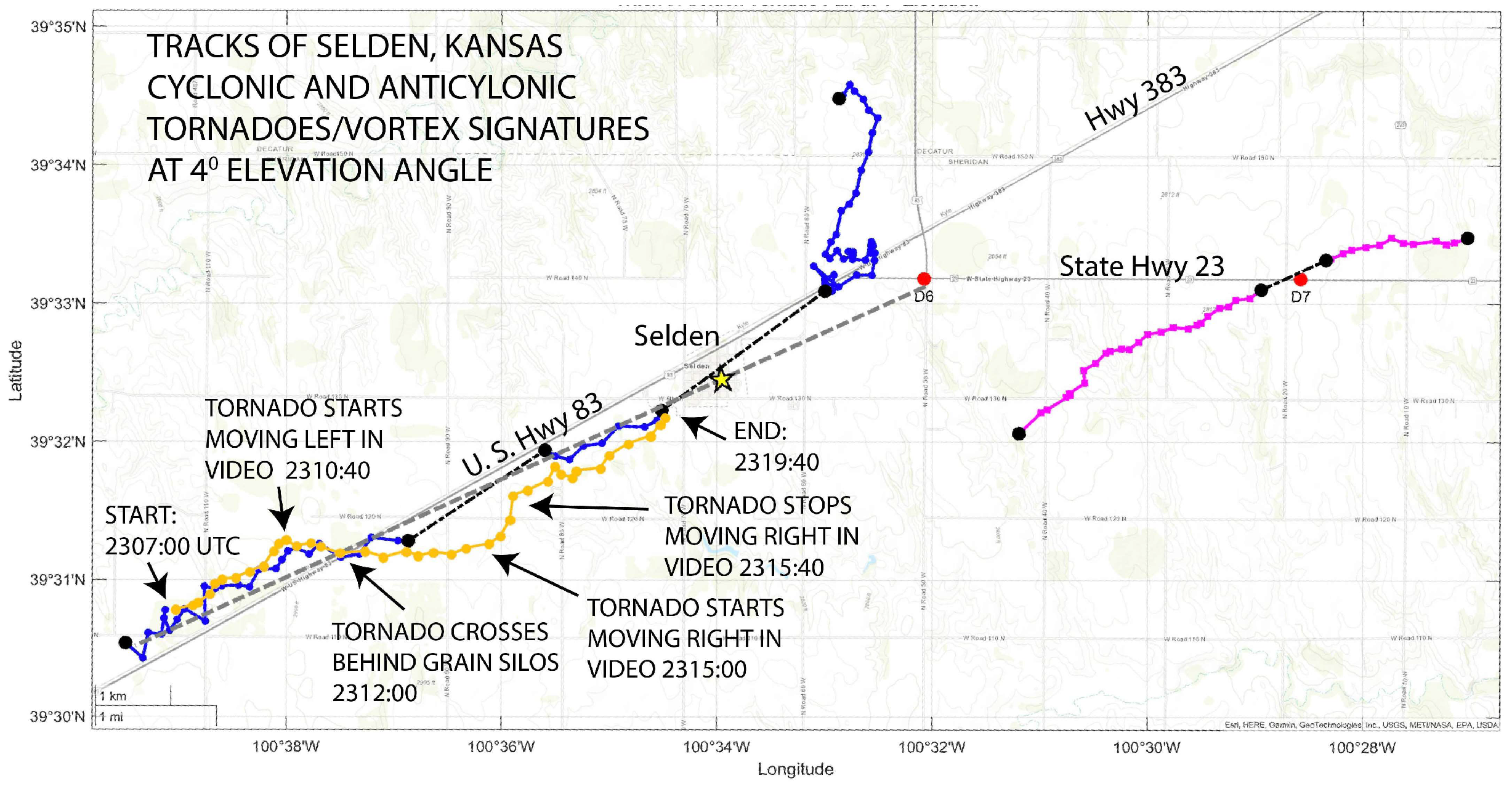
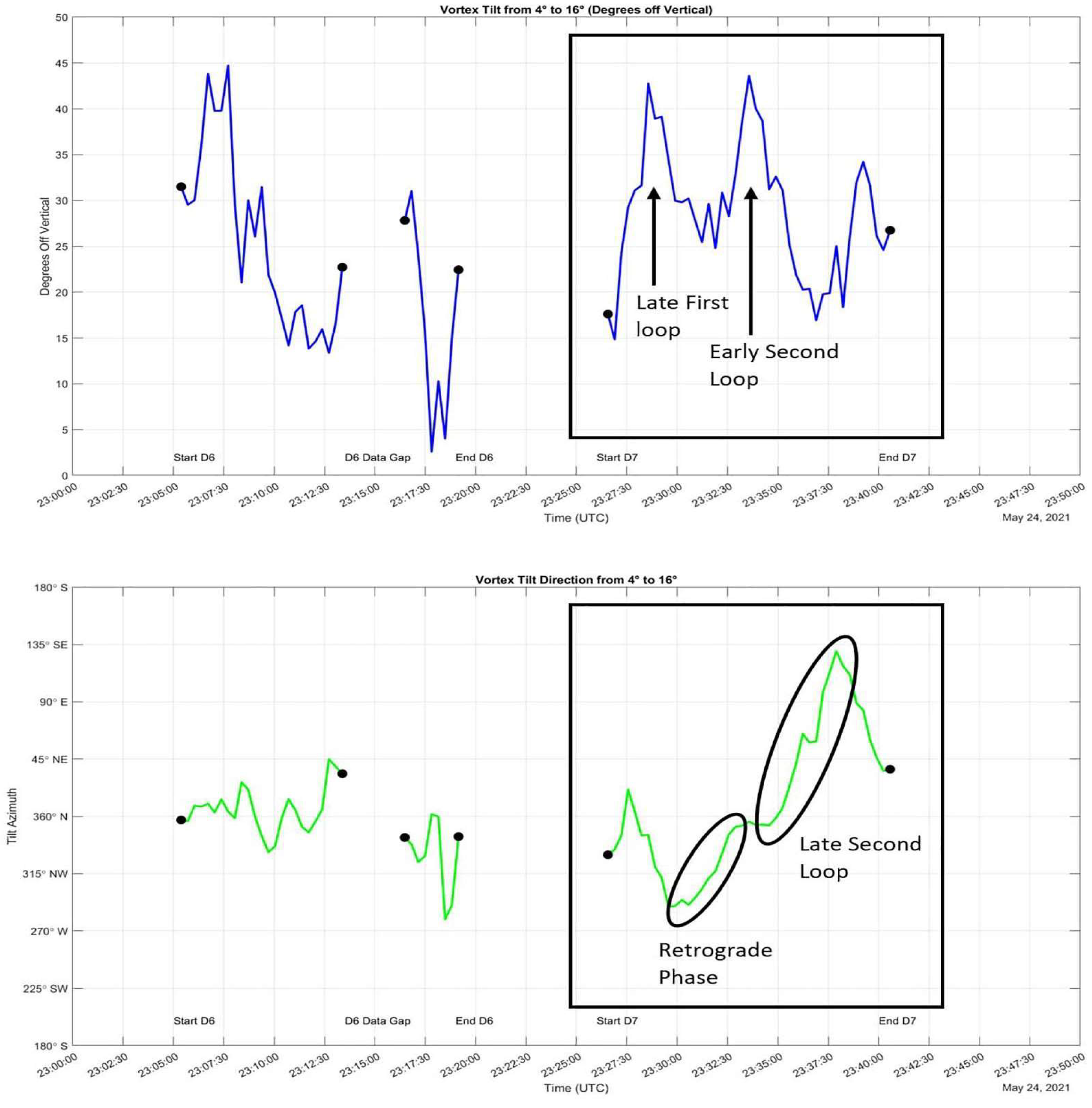
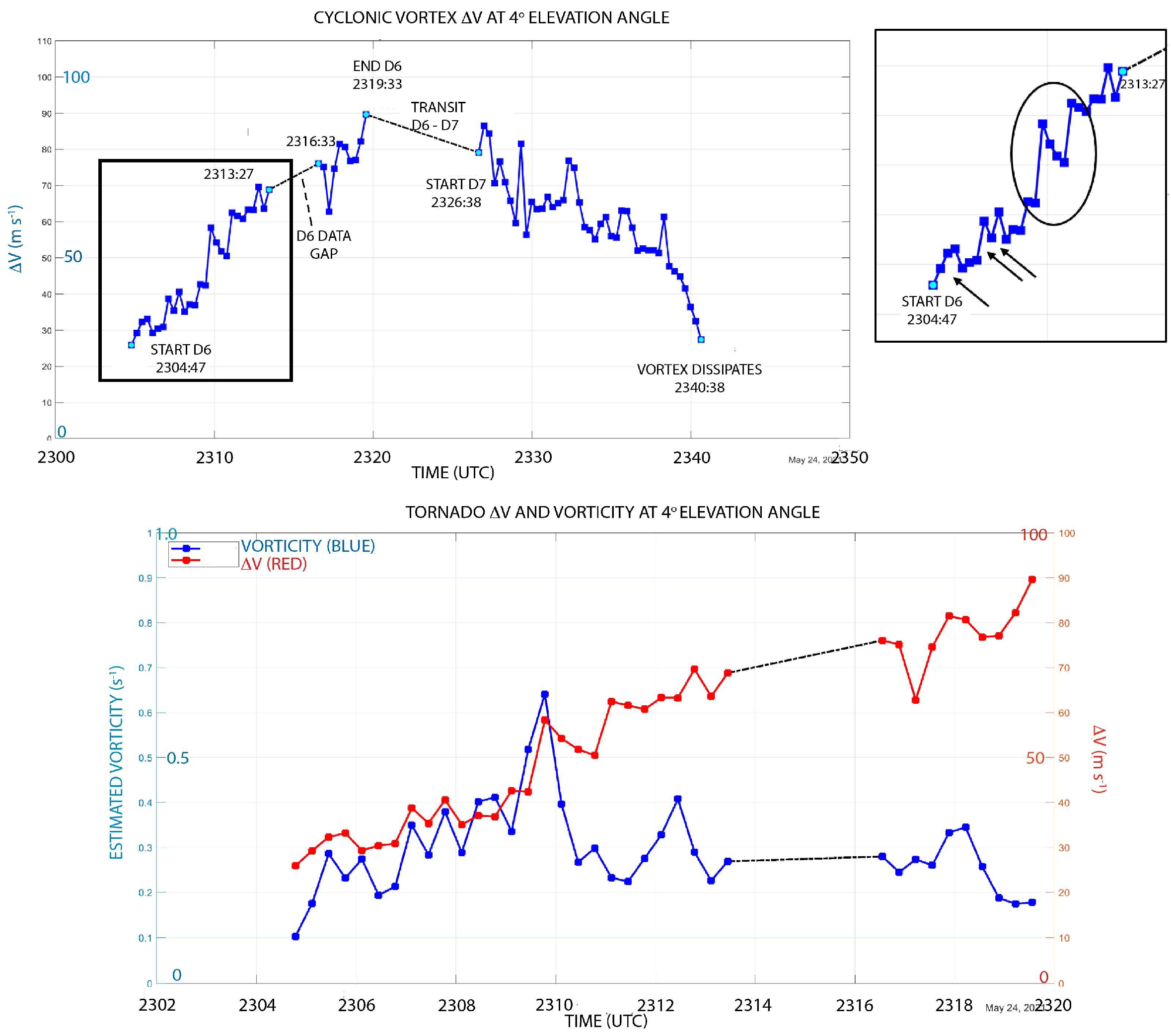

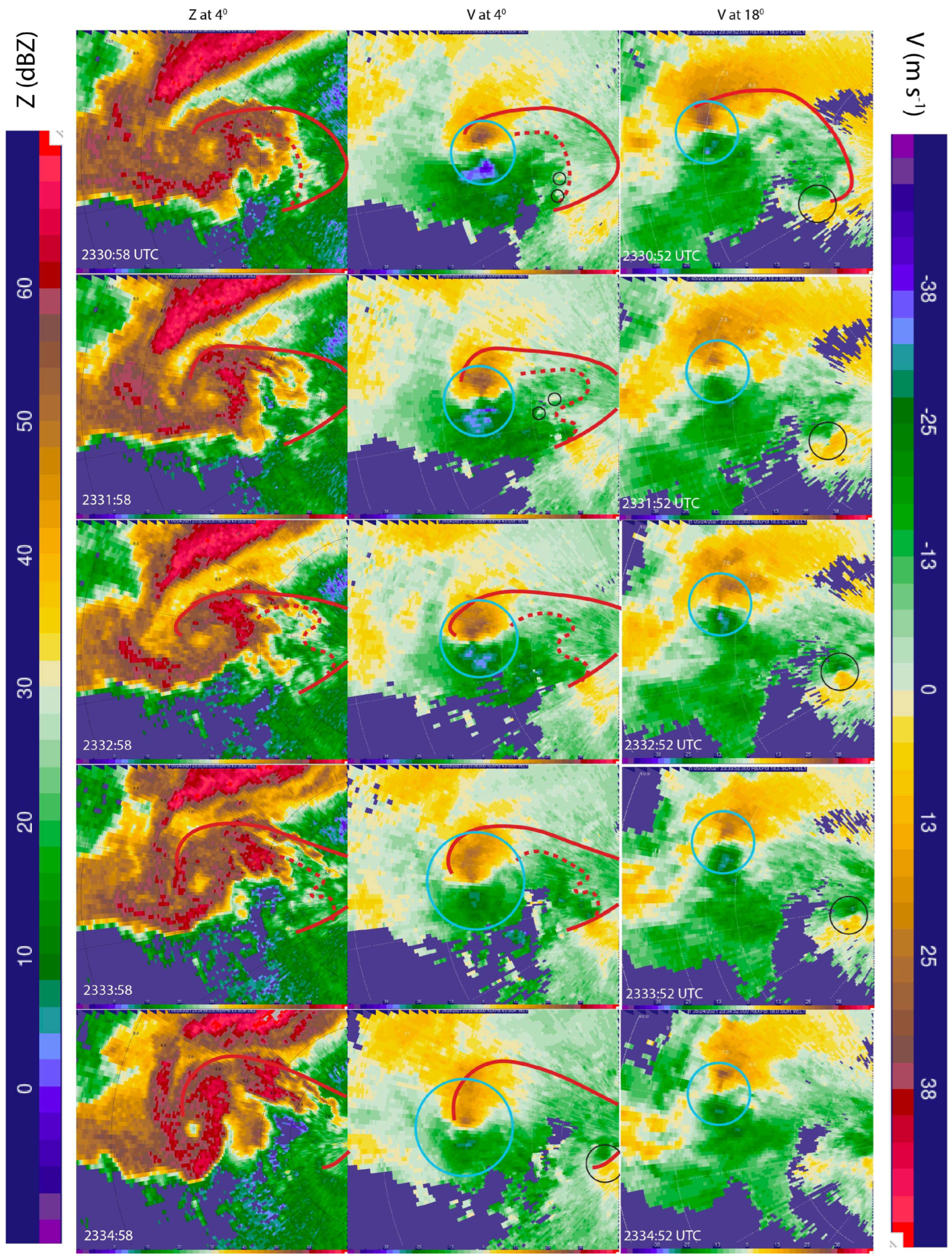
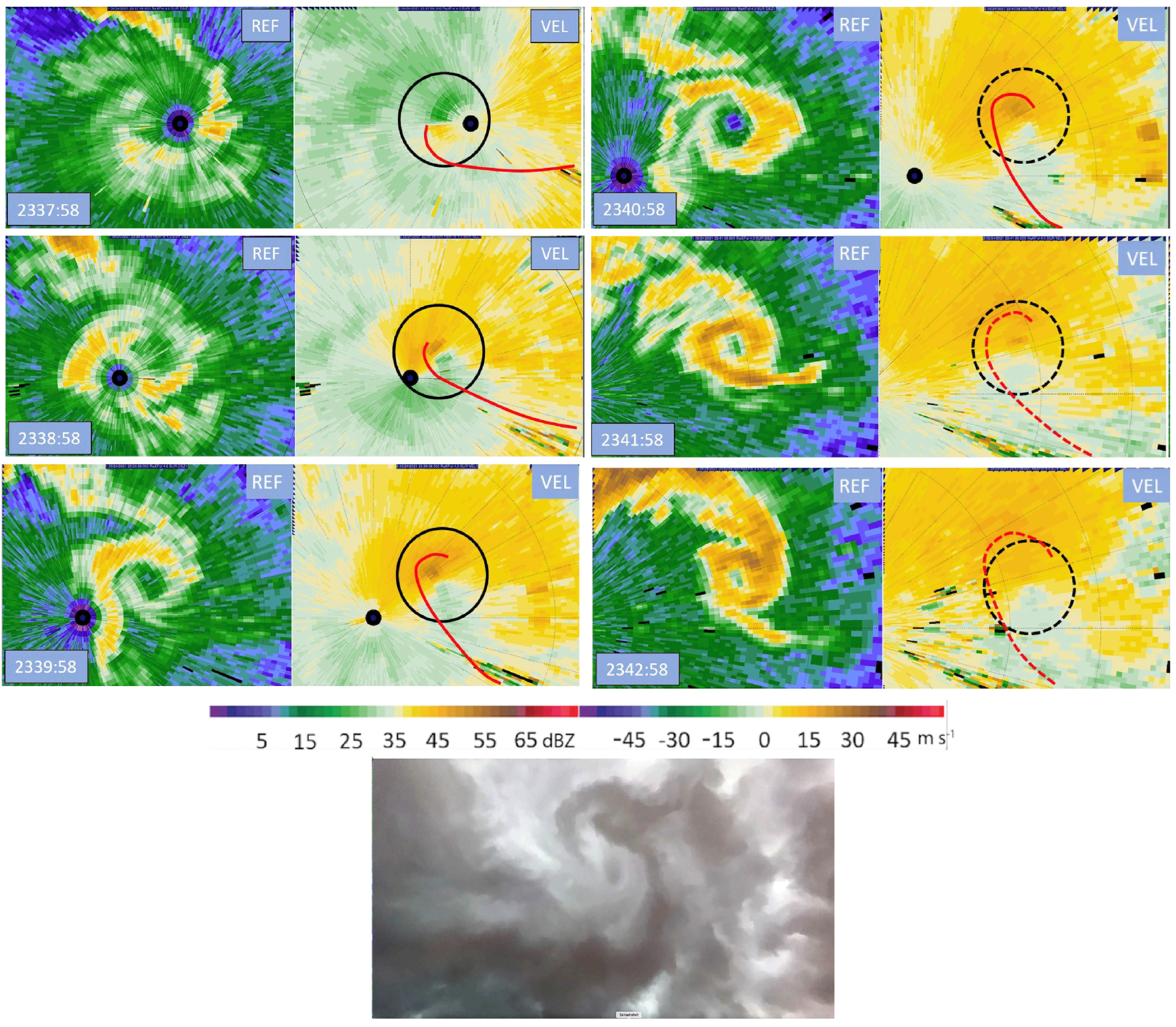
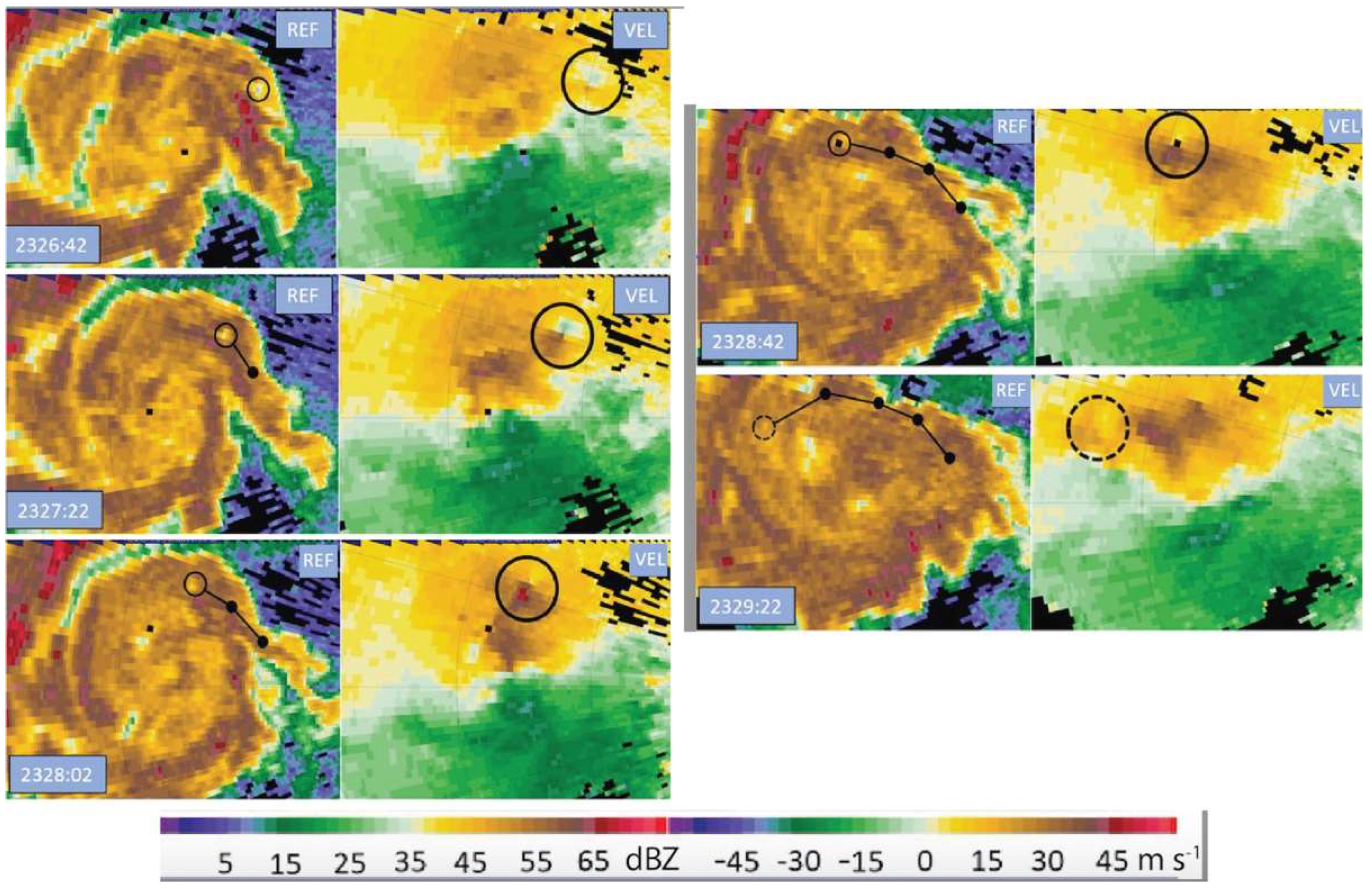
Disclaimer/Publisher’s Note: The statements, opinions and data contained in all publications are solely those of the individual author(s) and contributor(s) and not of MDPI and/or the editor(s). MDPI and/or the editor(s) disclaim responsibility for any injury to people or property resulting from any ideas, methods, instructions or products referred to in the content. |
© 2025 by the authors. Licensee MDPI, Basel, Switzerland. This article is an open access article distributed under the terms and conditions of the Creative Commons Attribution (CC BY) license (https://creativecommons.org/licenses/by/4.0/).
Share and Cite
Bluestein, H.; Margraf, J.; Greenwood, T.; Emmerson, S.; Snyder, J.; Wicker, L. On the Evolution of Cyclonic and Anticyclonic Tornadoes in a Supercell in Kansas. Environ. Earth Sci. Proc. 2025, 35, 19. https://doi.org/10.3390/eesp2025035019
Bluestein H, Margraf J, Greenwood T, Emmerson S, Snyder J, Wicker L. On the Evolution of Cyclonic and Anticyclonic Tornadoes in a Supercell in Kansas. Environmental and Earth Sciences Proceedings. 2025; 35(1):19. https://doi.org/10.3390/eesp2025035019
Chicago/Turabian StyleBluestein, Howard, Jacob Margraf, Trey Greenwood, Samuel Emmerson, Jeffrey Snyder, and Louis Wicker. 2025. "On the Evolution of Cyclonic and Anticyclonic Tornadoes in a Supercell in Kansas" Environmental and Earth Sciences Proceedings 35, no. 1: 19. https://doi.org/10.3390/eesp2025035019
APA StyleBluestein, H., Margraf, J., Greenwood, T., Emmerson, S., Snyder, J., & Wicker, L. (2025). On the Evolution of Cyclonic and Anticyclonic Tornadoes in a Supercell in Kansas. Environmental and Earth Sciences Proceedings, 35(1), 19. https://doi.org/10.3390/eesp2025035019






